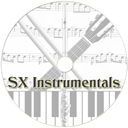Filter on ALL, SYNTH, DRUM, SAMPLER or MISC |
Total list currently 2405 items in 330 Brands |
Fairlight CMI | Qasar M8 CMI |
|
|
Description | The Fairlight CMI was based on the architecture of the Qasar M8 (Multimode 8), created by Tony Furse in 1975. In the early 70's, Tony Furse created his first prototype of hybrid analog/digital synthesizer, the Qasar I. In 1972-1973, Furse created his second prototype, the Qasar II, with the financial help of both the Federal Government of Australia and Don Banks, composer and director of the Canberra School of Electronic Music. In 1975, Furse invented his first fully digital, bi-processor synthesizer : the Qasar M8 (Multimode 8). Peter Vogel and Kim Ryrie were also working on the conception of a fully digital synthesizer. When they met Tony Furse, they were impressed by the M8, and decided to buy a licence from Furse, in order to use the conception of his machine. Although its features and functions were quite impressive for the time, the M8 was a bulky machine, with a poor sound quality, and a design made for research workers, and not musicians, which made it hard to handle. The first task of Vogel and Ryrie was to reduce the size of the machine, and to improve the general concept while keeping the functions of the M8. The components were not cabled anymore ; they were soldered to printed circuit boards. The keyboard changed from 4 to 6 octaves, with a better quality of the touch. The operating system, called QDOS (Qasar DOS) was an adaptation of MDOS (Motorola DOS) with a full implementation of the lightpen for most of the functionalities (browsing, editing, drawing a waveform...). This prototype, which was produced by Fairlight in 1976, was simply named Qasar ; it would later serve as a basis for Fairlight series I and II. The sampling function was added in 1978. M8 technical features
|
| Brand | Fairlight CMI |
| Model | Qasar M8 CMI |
| Device | Synth |
| Type | Keys |
| Engine Type | Digital |
| Engine | Sample |
| Voices (max) | 8 |
| Engine Detailed | Numeric additive synthesis with 128 harmonics, dynamic harmonic control, waveform editing |
| Memory | 32 kB, Hole paper tape reader |
| Keys | 73 |
| Key type | Keys |
| Velocity | No |
| Aftertouch | No |
| Extra info | Made by Fairlight, under the license from Creative Strategies |
| Produced: | 1975 - 1975 |
| Legend: | Obvious | Y: Yes, N: No, N/A: Not Applicable | |
| VCO | Voltage Controlled Oscillator | DCO | Digital Controlled Oscillator |
| LFO | Low Frequency Oscillator | Sub | Sub Oscillator |
| VCF | Voltage Controlled Filter | VCA | Voltage Controlled Amplifier |
| Velocity | As with a piano, the harder you hit a key, the louder the sound, unlike most organs which always produce the same loudness no matter how hard you hit a key. | Aftertouch | Pressing a key after you activated it. Channel Aftertouch, no matter which key, it will send a Channel message. Poly Aftertouch, sends the pressure per key instead of the whole channel. |
| Values for OSC, LFO, Filter, Envelope are per voice unless stated otherwise. | |||


